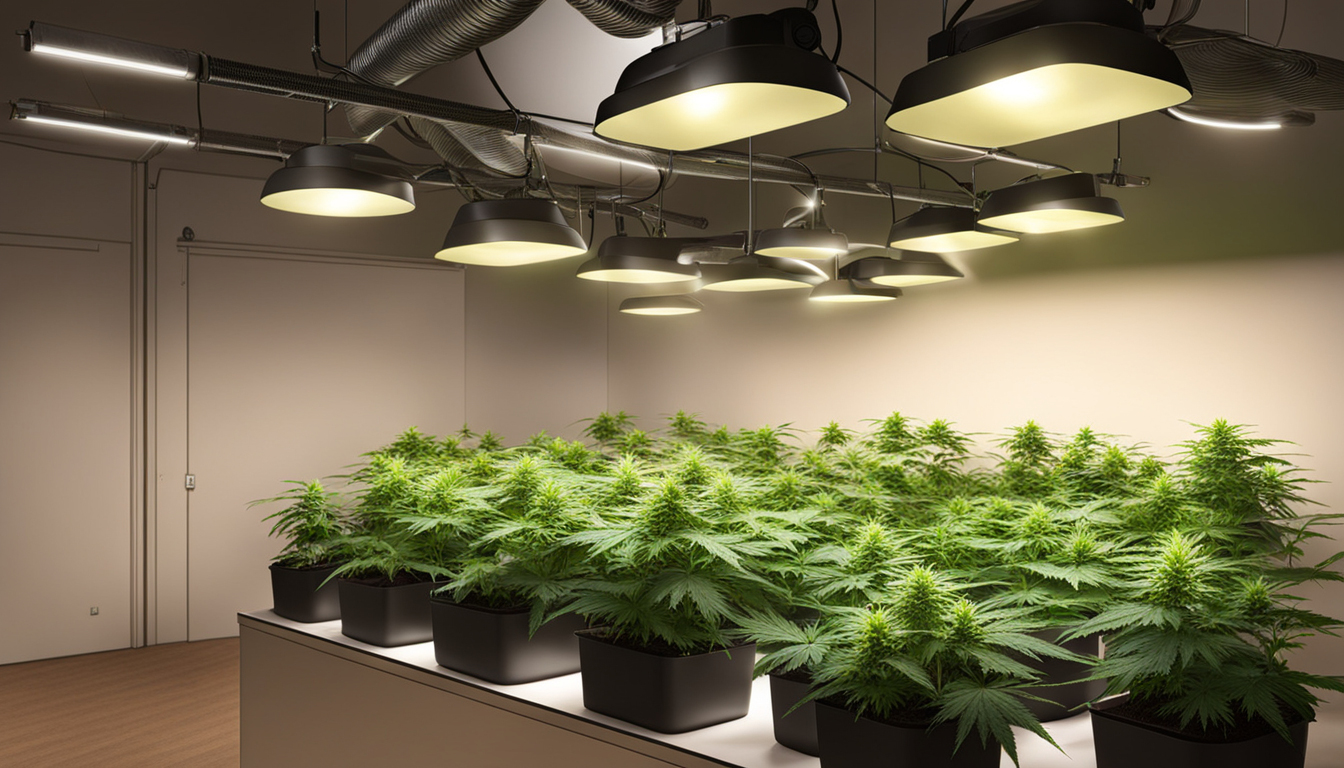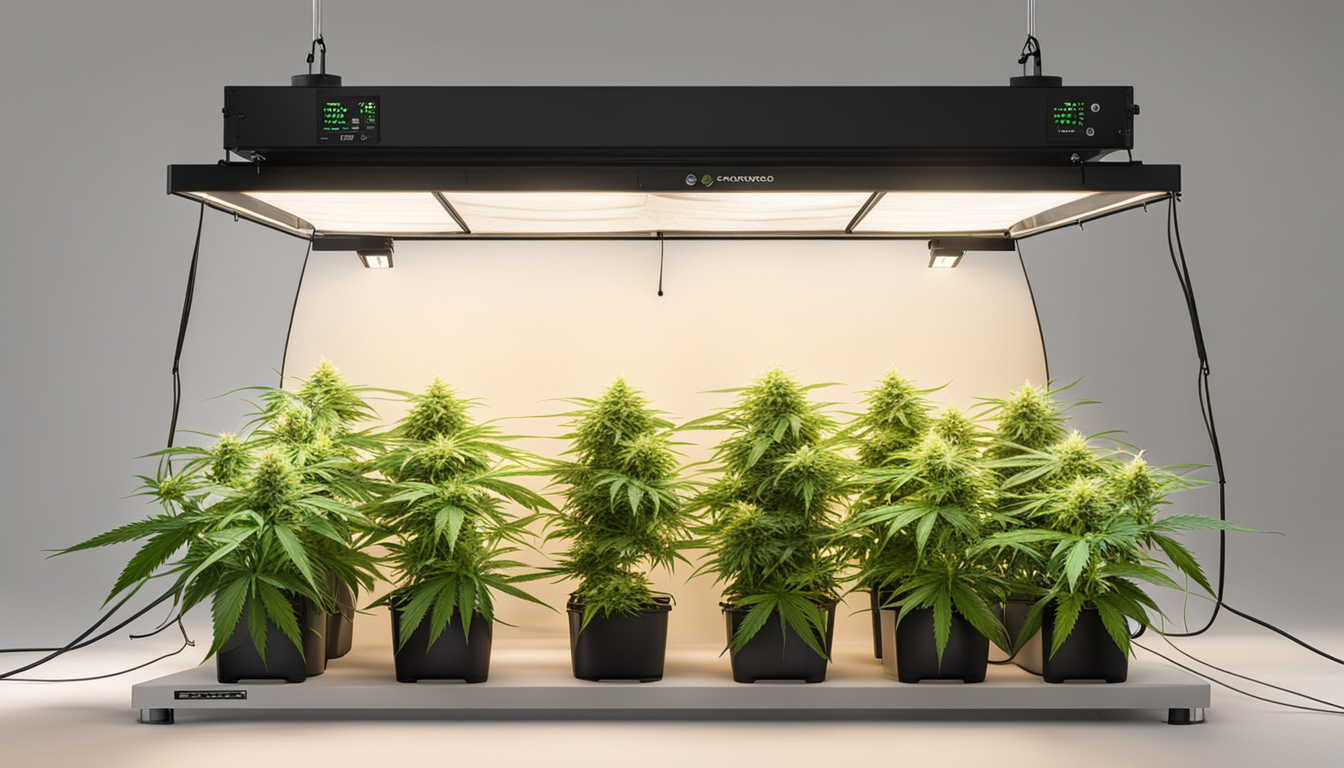Marijuana Grow Tutorial

Whether you're new to weed cultivation or looking to improve your existing grow, following this complete guide will help you produce bountiful, high-quality yields right at home. With the right supplies, methods, and care, growing cannabis indoors can be an extremely rewarding and cost-effective endeavor.
Choosing Pot Varieties
The first step in planning your indoor crop is picking the right cannabis cultivars to grow. The three main types of weed plants each have their own characteristics.
Sativas
Known for their uplifting intellectual effects, sativas grow tall and slender with narrow leaves. They flourish in hotter equatorial climates and have a longer blooming time between 2.5-3 months indoors. Top sativa strains include Sour Diesel, Durban Poison, and Jack Herer.
Relaxing strains
Indicas provide relaxing full-body effects and grow short and bushy with wide leaves. Adapted to cooler mountain climates, they bloom faster within 8-9 weeks. Popular indica varieties include Northern Lights, Bubba Kush, and Bubba Kush.
Hybrids
Hybrid varieties blend traits from both energizing strains and relaxing strains. They offer combined effects and have medium blooming periods around 2.25-2.5 months. Well-known hybrids are OG Kush, Girl Scout Cookies, and Blue Dream.

Setting Up Your Cultivation Space
Cannabis plants need the right controlled environment to thrive. Key factors for indoor grows are lighting, airflow, layout, and finding the ideal discreet spot.
Location
Choose an available space with quick access to irrigation and electrical outlets. An empty extra bedroom, unused closet, basement corner, or cultivation tent locked away in a garage all make great hidden cultivation room spots.
Lighting
Marijuana requires intense light for all vegetative stages. LED grow lights are efficient and come in full spectrum options simulating real sunlight. Cover 250-400 watts per square foot for the growth stage and 400-600 watts per square foot for bloom.
Airflow
Proper airflow and exhaust systems keep ideal temp, humidity, and pure CO2 levels. Set up quiet 10-15 cm blowers or carbon filters to circulate stale air and eliminate smells.
Layout
Maximize your space by arranging plants carefully under the lamps and leaving room to access and work around them. Set up distinct zones for vegetation, flowering, curing, and propagation.

Growing Substrates
Marijuana can be cultivated in various mediums, each with pros and cons. Pick a suitable option for your specific setup and cultivation style.
Soil
The traditional medium, soil is affordable and easy for beginners. It provides excellent taste but needs more irrigation and nutrients to feed plants. Enrich soil with perlite or coco to improve drainage.
Coco Coir
Made from coconut husks, reusable coco coir retains water but still allows air to the roots. It's cleaner and more predictable than soil. Use coco-specific nutrients to prevent accumulation.
Water systems
In water systems, plant roots develop right in fertilizer irrigation solution. This enables quick development but needs careful observation of solution properties. DWC and irrigation systems are popular methods.
Sprouting Seeds
Sprouting prepares your marijuana seeds to start growing taproots. This prepares them for transplanting into their cultivation medium.
Towel Method
Place seeds between moist paper towels and keep them moist. Check after 2-7 days for emerging radicles showing sprouting is complete.
Planting directly
Insert seeds Click Here right into pre-moistened growing medium 1⁄4 inch deep. Gently water and wait 1-2 weeks until sprouts push through the top.
Cubic rockwool
Soak cubic rockwool starters in pH-adjusted water. Place seeds 6mm deep into the cubes. Keep cubes moist until seedlings emerge within 1-14 days.
Repotting Young plants
Once germinated, marijuana seedlings need to be transplanted to avoid crowding. Move them into proper sized pots.
Preparing Containers
Fill final containers with cultivation medium enriched with slow-release nutrients. Allow pots to soak up water overnight before transplanting.
Gently repotting
Gently separate young roots from sprouting medium using a spade. Place into prepared pot at equal depth as before and lightly water in.
Vegetative Stage
The vegetative stage encourages foliage and plant structure through 18-24 hours of continual lighting exposure. This stage usually lasts 4-8 weeks.
Using 3/4 to full day of Light
Use grow lights on a 24 daily schedule or natural sunlight to trigger nonstop growth. Lamp intensity influences height and node distance.
Fertilizing
Use vegetative stage fertilizers richer in nitrogen. Make sure pH stays around 5.8-6.3 for proper nutrient uptake. Feed 1⁄4 to 1⁄2 concentration after 14 days and increase slowly.
LST and topping
Topping, low stress training, and trellising manipulate growth shapes for even canopies. This increases yields.

Flowering Stage
The blooming stage develops buds as plants reveal their sex under a 12/12 cycle schedule. It lasts 2-3 months depending on variety.
Changing Light Schedule
Change grow lights to 12/12 or move outside for outdoor 12/12 timing. This triggers plants to start blooming.
Stop Fertilizing
Leaching removes fertilizer residuals to enhance taste. Feed weakly the first period then just use plain water the last 2 weeks.
Flushing
Continue 12 hour photoperiod but flush using pH-balanced water only. Return to plain watering if buds aren't yet mature after two weeks.
Harvesting
Recognizing when weed is completely mature ensures maximum potency and aroma. Harvest plants at optimal ripeness.
Identifying Ripeness
Check swollen calyxes, faded pistils, and 10-15% cloudy trichs. Check buds across the plant as they won't all ripen evenly.
Harvesting plants
Use sterilized, razor-sharp pruning shears to gently cut each plant at the base. Leave several inches of stem attached.
Curing
Hang whole plants or colas inverted in a dark room with moderate temp and humidity around 50-60% for 1-2 weeks.
Curing
Curing keeps desiccating while aging the buds like fine wine. This technique smooths harshness and intensifies terpene and terpene profiles.
Jars and Humidity
Manicure cured buds from stems and place into sealed containers, packing about 3⁄4 full. Use a hygrometer to monitor container humidity.
Opening jars daily
Open jars for a few hours each day to gradually lower humidity. Rehydrate buds if RH goes under 55%.
Final Cure
After 2-3 weeks when moisture levels off around 55-65%, perform a final manicure and keep forever in sealed jars.
Common Problems and Solutions
Even seasoned cultivators run into different cannabis plant problems. Identify issues soon and fix them correctly to maintain a healthy garden.
Nutrient Deficiencies
Chlorosis often indicate insufficient nitrogen. Purpling stems and leaves signal low phosphorus. Test pH and boost nutrients gradually.
Pests
Spider mites, fungus gnats, mites, and nematodes are frequent pot pests. Use neem oil sprays, ladybugs, and sticky traps for natural control.
Mold
Excessive moisture promotes botrytis and root rot. Increase circulation and circulation while lowering humidity below 50% during flowering.

Conclusion
With this complete indoor weed cultivation guide, you now have the knowledge to grow bountiful strong buds for private grows. Apply these techniques and techniques throughout the seed starting, vegetative, and bloom stages. Spend in good equipment and carefully monitor your plants. In time, you'll be compensated with sticky fragrant buds you grew yourself under the loving care of your green thumbs. Good luck cultivating!